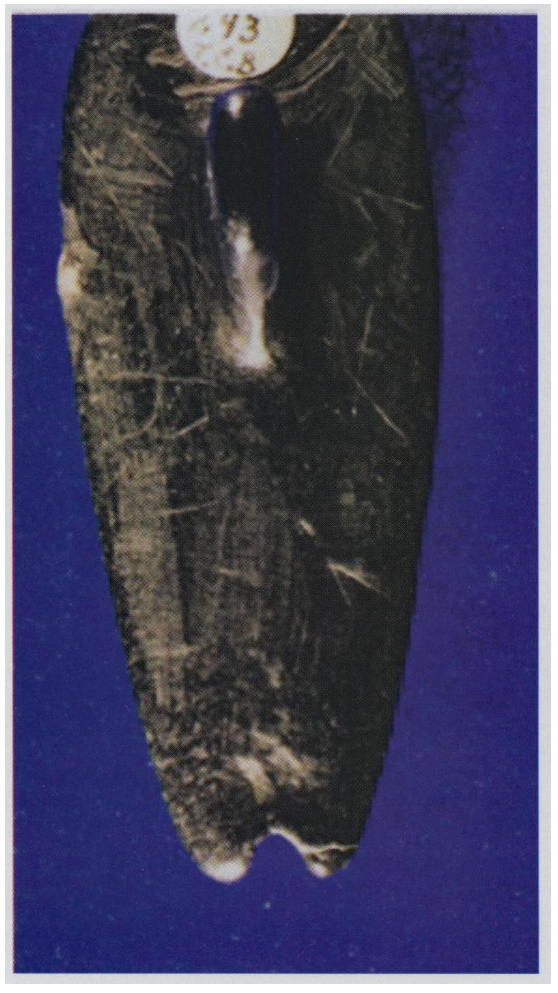by Col. John F Berner
Originally Published in the Central States Archaeological Journal, Vol.57, No.3, pg.142

Above: Intrusive Mound pipe made from steatite. It measures 2 1/2″ in length and was found near Elizabethton in eastern Tennessee. Photo: courtesy of JohnPafford.
This focus is on one of the briefest cultures of Prehistoric America. Scholars identify this period as the Intrusive Mound culture, which lasted a few hundred years from about 650 to 900 AD. It followed the demise of Hopewell and preceded the Mississippian phase in the ninth century. What we know of the Intrusive Mound people is mostly from their unique artifacts and their trait of burial in prior existing Hopewell mounds. Squire & Davis, mid-1800 explorers, mention the discovery of intrusive burials within Hopewell edifices at Mound City, Chillicothe, Ohio.
These people were obviously acquainted with Hopewell, as they emulated a form of platform pipes that had only existed in those previous prehistoric times. Diagnostic artifacts of this distinctive culture include antler/ bone harpoon projectiles, antler hafted Beaver tooth incisors, stone pick instruments of diorite or granite (whose application is yet unidentified), shell beads, trapezoidal slate pendants, and distinctive platform pipes such as the one shown above.

These platform pipes are “self pipes”, designed to be smoked without an additional stem. Most are made from a blackish green steatite, found in North Carolina. They feature a rimmed bowl which expands from the stem upward and is gouged to extreme thinness. Two distinct styles have been identified with Intrusive Mound. One an elbow type, the other is the platform type with the bowl situated near the end of a thin ridged stem platform, often have a distinctive fin or handle below the bowl and platform. I speculate its purpose is to hold the instrument while smoking.
Similar to Hopewell platform pipes, the stem of Intrusive Mound pipes are bored about 1/8″ in diameter. This negates the use of a supplemental stem. The platform also extends beyond the bowl, for which I assume may be for appearance rather than utilitarian.
Students of prehistoric smoking pipes and their archaeological compatriots have long been puzzled by the strange and interesting work marks on the platforms and bowls of both Hopewell and Intrusive Mound artifacts. It has been suggested by some that these striations appear as though they might have been made by modern abrading tools. Nothing could be further from the truth!
In 1959, Earl Townsend Jr., author of”B irdstones of North America”, commissioned the Nicholson File Company to examine these marks, and they reported that they were inconsistent with their metal rasps.
Early explorers of Hopewell mounds reported finding the teeth and jaws of the Gar fish (indigenous to the Ohio River valley) among the burial furniture, and suggested that they could have been used to produce the work marks evident on these pipes.
Steatite selected for the unique Intrusive mound pipes is soft when first quarried. Subsequent smoking and later burial in the earth for hundreds of years produces a particular hardness.
Efforts by clandestine artisans over the past 150 years to recreate replicas have been a failure. The Elizbethton, Tennessee Intrusive Mound pipe is both unique and quite rare. In forty years of prehistoric pipe study and examination, I have seen but five authentic specimens, two of which were damaged and restored. This one has graced the collections of Byron Knoblock, Tommy Beutell and Eric Walters. Thank you for listening.
“Used by Permission of the Author”
To learn more about or to join the Central States Archaeological Society, click here: http://www.csasi.org/ .
